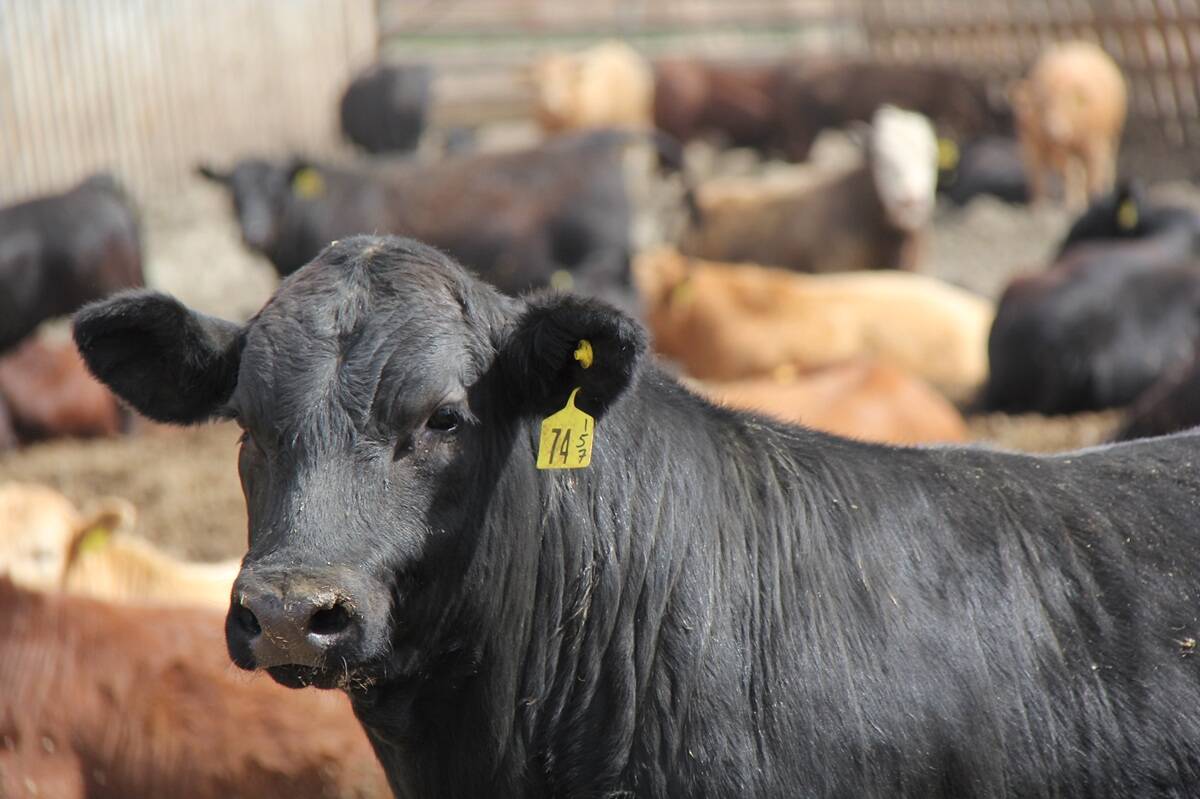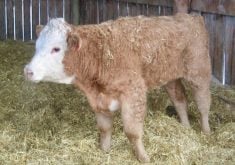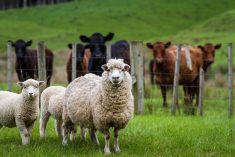Complacency is always an enemy. And nowhere in the beef business does complacency sit more steely and imperfectly than when managing calves as they move from pasture to market. With 2014 witnessing weaned calves topping $1,800, production shortcuts will abound in the rush to get them sold. Producers will be tempted to sidestep good management practices, anxious to see semi-trailers disappear en route to auction. In the end, fall traditions will prevail, making calf health someone else’s worry.
Bovine respiratory disease (BRD) remains one of the major diseases causing losses in weaned calves placed into feedlots. BRD accounts for 65 to 80 per cent of the sickness in some feedlots and between 45 and 75 per cent of the death loss experienced in many lots. What BRD costs the North American beef industry is difficult to estimate, but probably lies between US$600 and $750 million annually.
Read Also

Mycoplasma bovis in beef cattle causes more than pneumonia
M. bovis causes pneumonia and is a major cause of infectious arthritis in calves and feeder cattle
Although the modern beef industry has come a long way in understanding BRD, particularly the environmental and genetic factors associated with respiratory infections, and in developing better vaccines, treatments, diagnostics and management practices, several speakers at the July 2014 BRD Symposium in Denver, Colorado, pointed out, “We must do better.”
Yet despite apparent progress, little has changed. Regardless of advancements in knowledge and technology associated with BRD there has been no significant reduction in its incidence. Feedlot managers readily admit that despite increased investment in treatment and disease prevention protocols in their individual businesses, mortality has not improved. In the view of several Alberta feedlot operators, “Although the mix of diseases in the ‘dead pile’ has changed and the cost of preventing cattle from getting there has increased, mortality today is just as high as it was 20 years ago!”
Throughout the conference, presenters outlined research into new technologies and management systems for combating BRD: high-powered things like genomic-enhanced selection, pharmacogenomics for development of targeted vaccines, and treatments and new diagnostic tools including rapid laboratory analysis, on-farm respiratory scoring, electronic behaviour monitoring and the Whisper electronic stethoscope system.
While new technology holds great promise in the fight against BRD, it also became clear the industry could significantly reduce losses by getting back to basics. It was also noted that veterinarians have a key role to play in helping clients re-examine time-tested practices.
Good nutrition for the pregnant cow and maintaining her body condition through gestation is fundamental for high-quality colostrum and long-term immunity for the newborn calf. Healthy calves — early in life — translate into improved weaning weights and better performance as they are placed in feedlots later in the fall.
Optimum body condition has a great deal to do with reproductive performance and reproductive momentum of beef cows and their heifer replacements. Low-stress weaning practices help minimize a calf’s vulnerability to disease, and builds behaviour patterns that permit calves to reveal, rather than hide, early signs of sickness.
Numerous studies have shown a sound preconditioning program incorporating nutrition, planned vaccination protocols and on-farm weaning for at least 30 days — 45 days is better — can dramatically reduce risk of BRD in calves shipped to feedlots or background operations.
The question then becomes: “Why aren’t more background operations and feedlots stocked full of low-risk preconditioned calves?”
The answer involves perceptions and economics, says Purdue University veterinarian Mark Hilton. Some cow-calf producers still see preconditioning as a cost, and have not recognized the economic returns generated by premiums. On the buyers’ side, some cattle feeders continue to look for calves they perceive as steeply discounted, recognizing that the highest potential rate of return is often associated with “high risk” BRD scenarios. Under these conditions, a high disease incidence becomes a cost of doing business.
Hilton believes some portion of the background and feeding sector will continue to take chances on cheaper, high-risk calves if they are available, so the focus should be on educating cow-calf producers on the benefits of early prevention and preconditioning. He suggests that instead of just discussing the buyer-dependent “preconditioning bonus,” veterinarians and the industry should highlight the profit from additional pounds sold and returns per hour for the cow-calf enterprise, which are seller-dependent. In our beef-cattle production system, animal health begins at the cow-calf level, and that, perhaps, is where the veterinarians can have the greatest impact on BRD.
Several research projects have demonstrated that commingling from different farms at the auction market increased the risk of respiratory disease in calves following feedlot entry. Cow-calf producers in many cases could improve their ability to sell larger lots of uniform cattle through genetic selection and managing for shorter calving seasons.
Researchers at Iowa State University used a Disposition Scoring System to compare health and performance among docile, restless and aggressive cattle. During the entire feeding period, average daily gain was greatest in calves classified as docile, followed by the restless group and the aggressive group. Mortality rates were 1.09, 1.02 and 1.91 per cent, respectively, for docile, restless and aggressive cattle. Economic return was $62.19 lower for aggressive cattle than for docile cattle in this study. Much of this difference was attributed to decreased death loss, increased ADG and improved carcass quality grade.
The reasons behind ongoing trends in BRD prevalence and why industry does not adjust are not readily apparent. During the Denver symposium, several important points were made. First, in spite of advancements, we have not seen any significant reduction in the incidence of BRD in feedlots. Genetic susceptibility, possibly through selection pressure on other production traits, probably plays a role. Then there is an obsolete marketing system, particularly for beef calves, that continues to include a risky combination of pathogen exposure and stress. And finally, the questions from those prepared to challenge our industry about animal care. Why do high-risk practices prevail? And why aren’t we doing better?
Dr. Ron Clarke prepares this column on behalf of the Western Canadian Association of Bovine Practitioners. Suggestions for future articles can be sent to Canadian Cattlemen ([email protected]) or WCABP ([email protected]).

















